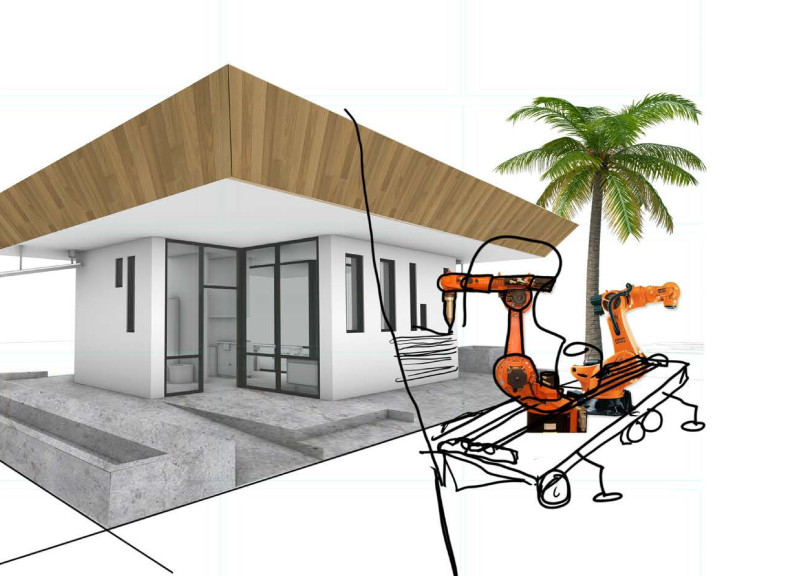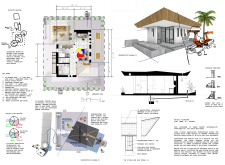5 key facts about this project
At its core, the Micromouse project serves as a versatile living environment that seamlessly integrates functionality and aesthetic appeal. Its design is rooted in the concept of maximizing space efficiency without sacrificing comfort. The thoughtful arrangement of interior spaces promotes a sense of flow and connectivity, fostering an atmosphere conducive to both relaxation and social interaction. The living area, for instance, is centrally located and designed for adaptability. It features flexible furniture that can easily be reconfigured to suit various needs, illustrating a practical response to modern living challenges.
Key components of the Micromouse include a smartly designed kitchen and dining space that encourages communal activities. The open shelving and modern appliances enhance functionality, making the kitchen not just a cooking area but also a place for gathering. Expansive glass elements punctuate the structure, allowing natural light to flood into the interiors while creating a seamless transition between the inside and the surrounding outdoor environment. This connectivity is further emphasized through a generous patio that invites outdoor living, reflecting a contemporary lifestyle where nature plays an integral role in daily routines.
One of the standout features of the Micromouse project lies in its materiality, which has been selected with both aesthetics and sustainability in mind. The use of 3D printed concrete for the walls provides not only structural robustness but also allows for intricate textures that heighten visual interest. Additionally, structural insulated panels (SIPs) are employed for the roof, ensuring that the building maintains energy efficiency while reducing environmental impact. Wood is utilized in various elements, enhancing the visual warmth and integrating natural textures within the modern design framework. The thoughtful selection of materials extends beyond the building’s skin to include innovative solutions such as flexible furniture, designed to maximize the utility of every square foot.
The architectural design of Micromouse is characterized by a unique approach toward creating adaptable living spaces. This adaptability is critical in an era of increasing urbanization, where traditional residential layouts may no longer meet the dynamic needs of modern users. The ability to transform spaces—whether it’s a living room that can become an office or a bedroom that accommodates guests—is a vital feature that speaks to the project's practical ethos.
Another crucial design aspect is the attention to sustainability. The Micromouse incorporates systems for water collection and reuse, which reflect a commitment to minimizing resource consumption. Such eco-friendly features are increasingly relevant in today’s context and demonstrate an alignment with the goals of contemporary architecture that seeks to respond responsibly to environmental challenges.
The overall design aspirations of Micromouse capture a harmonious blend of modern living and environmental stewardship. It challenges traditional notions of residential architecture by proving that value can be found in smaller, thoughtfully designed spaces that prioritize both human needs and ecological considerations. For those interested in a deeper exploration of this innovative architectural endeavor, a review of the architectural plans, sections, and designs will provide valuable insights into the considered details that make Micromouse a noteworthy example of contemporary residential architecture. Exploring these elements can further illuminate the unique architectural ideas and functional principles that underpin this project, showcasing how effective design can create meaningful living experiences.























